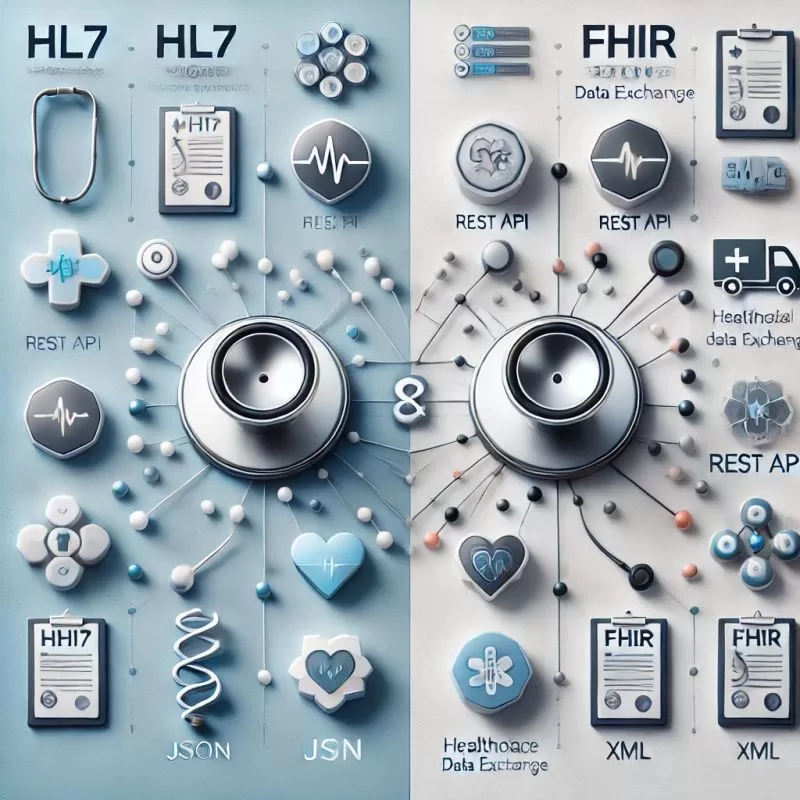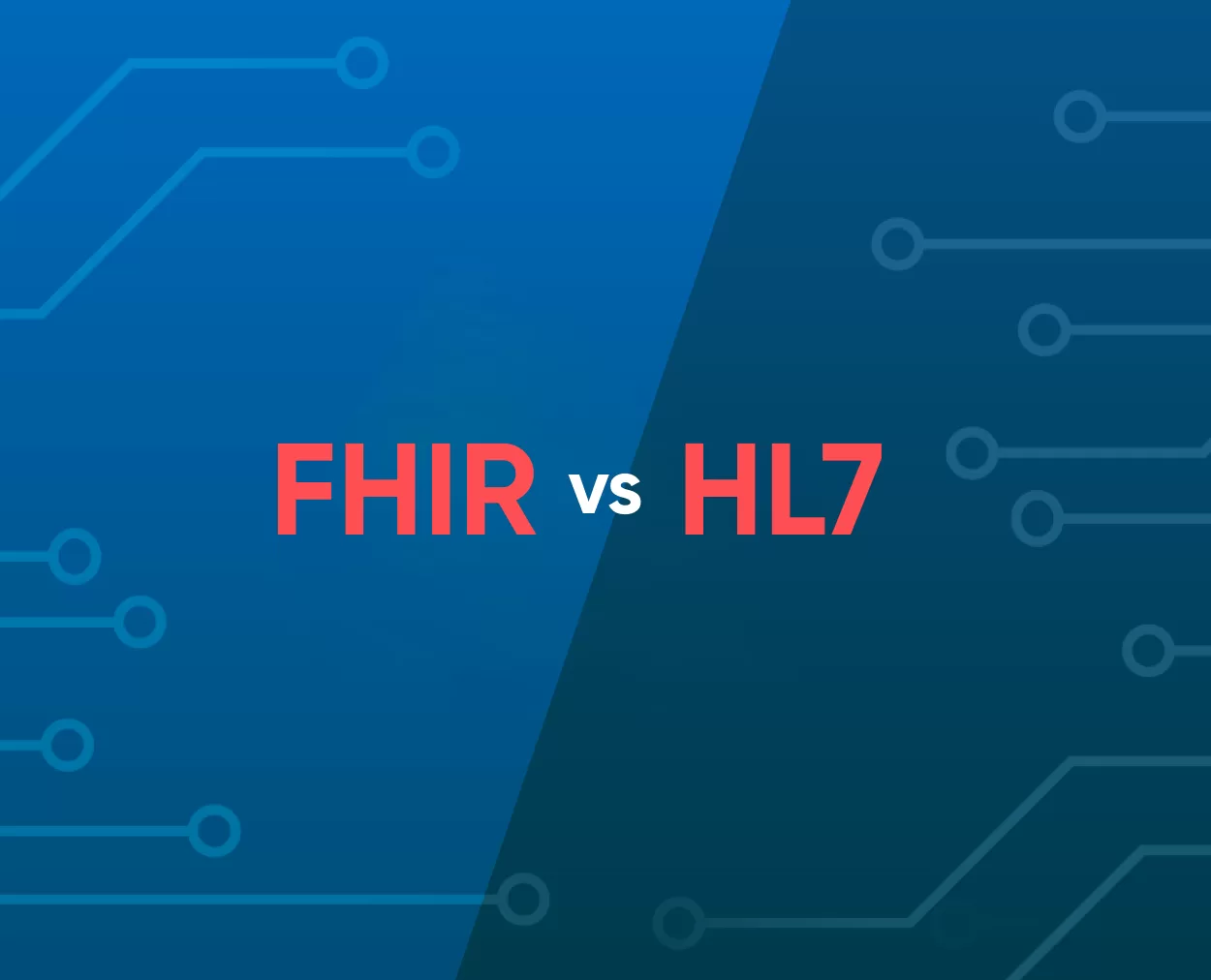The healthcare industry is rapidly transforming, with efficient data exchange serving as the backbone of innovation. But how do standards like HL7 and FHIR compare? Here’s a concise guide to help healthcare leaders and tech decision-makers make informed choices:


1. Data Exchange Format
- HL7: Traditional structured messaging that relies on XML—think complex parsing and limited flexibility.
- FHIR: Built with modern web standards like JSON and REST APIs, making it modular, streamlined, and developer-friendly.
2. Interoperability
- HL7: Effective within a single organisation but struggles with cross-platform exchanges.
- FHIR: Tailored for cross-system collaboration, making it ideal for mobile health apps and integrated care solutions.
3. Implementation Complexity
- HL7: Requires lengthy configurations and custom coding, leading to high complexity.
- FHIR: Designed for adaptability, with RESTful APIs enabling faster and easier implementation.
4. Flexibility & Scalability
- HL7: Rigid and difficult to scale, especially in dynamic environments.
- FHIR: Highly scalable and future-proof, supporting rapid deployment of new features.
5. Security
- HL7: Provides basic transport security but demands additional measures for compliance.
- FHIR: Advanced security features such as OAuth and encryption are built in, ensuring robust compliance with modern standards.
6. Use Cases
- HL7: Best suited for internal hospital systems and administrative processes.
- FHIR: Perfect for telehealth, IoT integrations, patient engagement tools, and other patient-centric solutions.
Why This Matters
FHIR’s modern design positions it as the clear choice for healthcare organisations seeking interoperability, scalability, and faster time-to-market. As the demand for patient-centered solutions and seamless health data exchange grows, adopting FHIR is more than a technical upgrade—it’s a strategic move for the future.
Ready to Modernise Your Data Exchange?
Let’s explore how adopting the right standards can accelerate your digital transformation journey and help you achieve your healthcare goals.
💡 Connect with us today!



